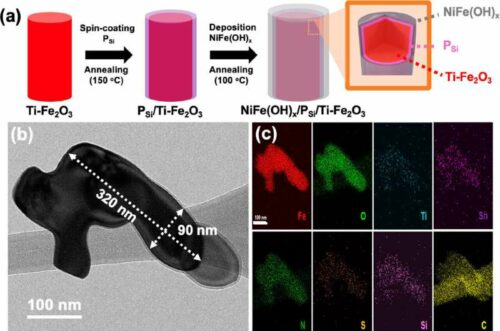UNIST researchers revolutionise green hydrogen production, enhancing photoelectrode efficiency and stability with organic semiconductors, steering towards a carbon-neutral future.

Utilising solar energy for green hydrogen production involves breaking water down into its essential elements through charges generated in semiconductors that capture sunlight. While most previous studies have centred on inorganic semiconductors for photoelectrode construction, organic semiconductors present a promising alternative due to their lower costs, varied processing methods, and ease of large-scale production. Moreover, their high solar energy conversion efficiency potentially boosts hydrogen production efficiency, although their susceptibility to water damage has hindered their widespread application in photoelectrodes.
Researchers from the School of Energy and Chemical Engineering at Ulsan National Institute of Science and Technology (UNIST) have achieved a significant breakthrough in photoelectrode development. The team have successfully created a robust and high-performance photoelectrode by integrating organic semiconductors as an intermediary layer within the existing inorganic semiconductor-based photoelectrodes.
The team managed to enhance the stability of conventional iron oxide-based photoelectrodes when exposed to water by applying a coating of organic semiconductors onto their surface. Further safeguarding the setup, they introduced a catalyst composed of a nickel/iron double-layer hydroxide as an added protective layer over the organic semiconductor coating, preventing its direct contact with water. This groundbreaking strategy enabled the charges created from solar energy absorption to catalyse hydrogen production reactions effectively.
By addressing the drawbacks of conventional inorganic semiconductor-oriented photoelectrodes, the team have showcased the potential for more extensive integration of organic semiconductors in hydrogen production processes facilitated by photoelectrodes. This milestone paves the way for heightened efficiency and stability and fosters the progression of sustainable energy solutions, steering us towards a carbon-neutral future.
Reference: Hyo-Jin Ahn et al, Utilizing a Siloxane-Modified Organic Semiconductor for Photoelectrochemical Water Splitting, ACS Energy Letters (2023). DOI: 10.1021/acsenergylett.3c00755






